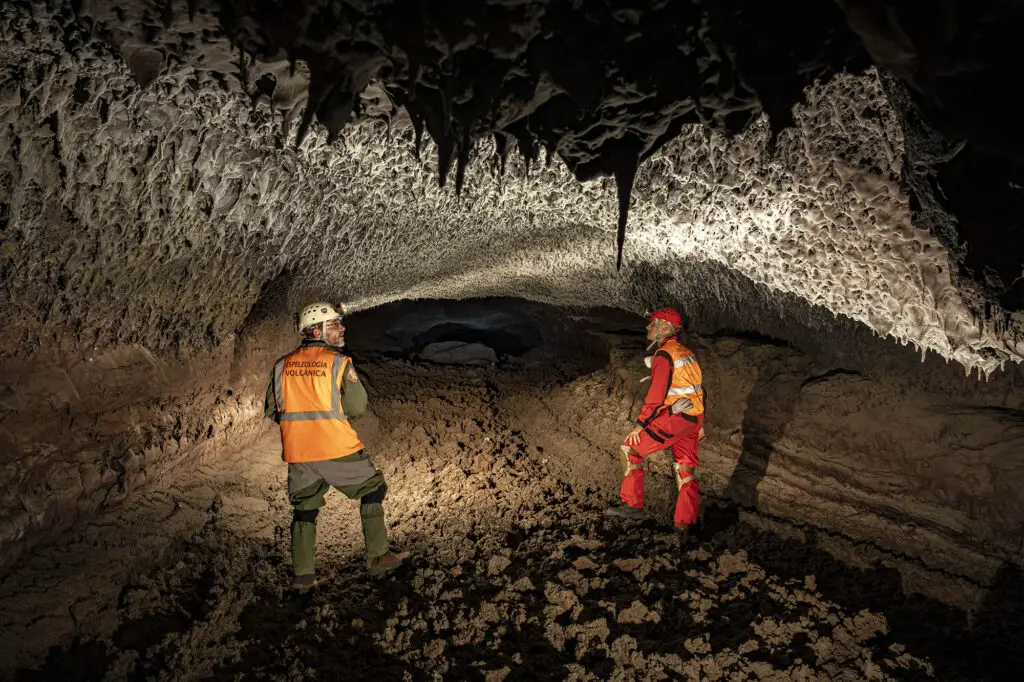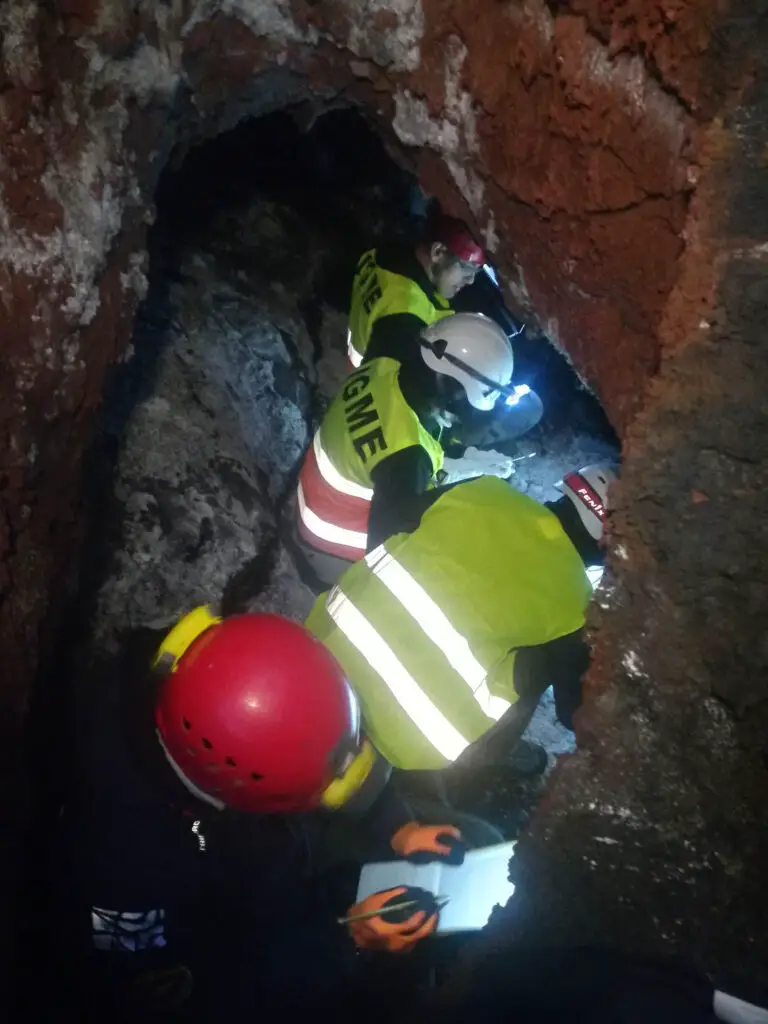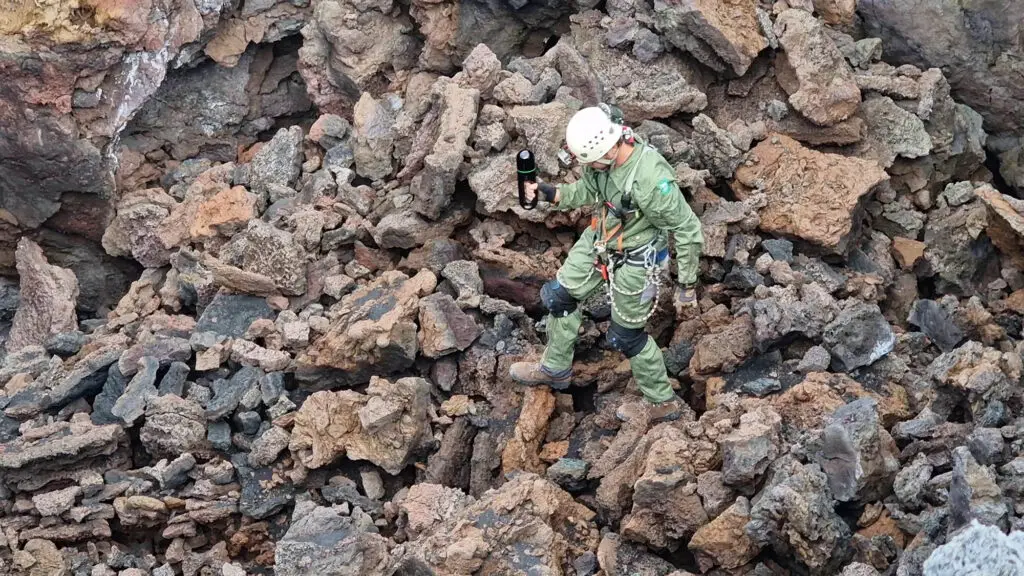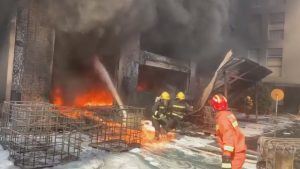This incredible footage shows volcano experts entering an otherworldly lava tube formed after the 2021 Cumbre Vieja eruption for the very first time.
The volcano’s 85-day-long eruption transformed the Aridane Valley on the island of La Palma in the Canary Islands into a gigantic labyrinth of lava tubes.
Lava tubes, also known as volcanic tubes, are formed during volcanic eruptions when flowing lava develops a solid crust on its surface while the interior remains molten.
The new lava tubes on La Palma were considered impenetrable until speleologists ventured some 80 metres into one that they have dubbed the “Red Tube”.
In an interview with Newsflash, Volcanic Speleology Team Coordinator Octavio Fernandez Lorenzo explained: “The distance is short, a maximum of 80 metres, and from 30 to 60 degrees Celsius.
“As cavers, we move through the cold air current at the bottom, while the area above is hot. This allows us to study the cooling inside the tubes.
“Thanks to the Venturi effect, we can be in an area close to 400 degrees and monitor that zone with a pole.
“Most small tubes are at 30 degrees, with some uncomfortable areas at 40 or 50 degrees, and a zone at 60 degrees, where we reach to install a monitor and take a sample.

“The sensation is like being inside an oven, taking out and putting in pizzas.”
In thermal images obtained by Newsflash, the experts can be observed walking through “cold” areas while the ceiling above them is over 200 degrees Celsius.
Octavio, who has been working as a speleologist for 30 years, also told Newsflash about the team’s research into a new chasm on the north face of the volcano.
He said: “Taking samples inside the cavities helps the microbiology team determine the presence of bacteria or fungi.
“It seems that colonisation has occurred earlier than expected. We can confirm that they are rapidly colonised by microorganisms.
“There are many unknown bacteria that have the potential to be used as antibiotics for humans.”
It is believed that the deepest lava tube formed by the 2021 eruption could reach the sea, making it the longest lava tube in the Canary Islands if verified.

Octavio, 45, explained to Newsflash: “The longest volcanic tube is Cueva del Viento in Tenerife (with 18 kilometres mapped to date). We already have the potential to surpass Cueva del Viento.
“In La Palma, before this volcano, we had catalogued more than 200 volcanic tubes, none of which exceeded 1.5 kilometres.
“In this new volcano, we have seen that many volcanic tubes have formed. Each of these has a minimum length of three to four kilometres from end to end.”
He added: “We have only entered a maximum of 80 metres into one tube. It will take years of exploration because the tubes cool down slowly.
“We were surprised that we were able to enter a part of it. There is potential for a very large tube. During this exploration, things may happen as the cave cools down.
“We could map five kilometres of the cave and then find a section where we cannot proceed, but there may be another cave in another area that has a connection.
“In spelunking, it is possible to find connections over time.”

Octavio, who is from La Palma himself, hopes the tubes will be accessible to tourists in the future.
He told Newsflash: “I hope there will be significant tourism, but we need to be careful. It will take a long time, and always in a respectful manner. The entrance, however, would have an owner.”
When asked whether the volcano on the Cumbre Vieja ridge could erupt again, he replied: “It’s possible that it could be 10 or 20 years before another eruption.
“We would see it coming, but we wouldn’t know where it would emerge, since it’s challenging to predict. However, we can say that there are currently no signs of activity.”



